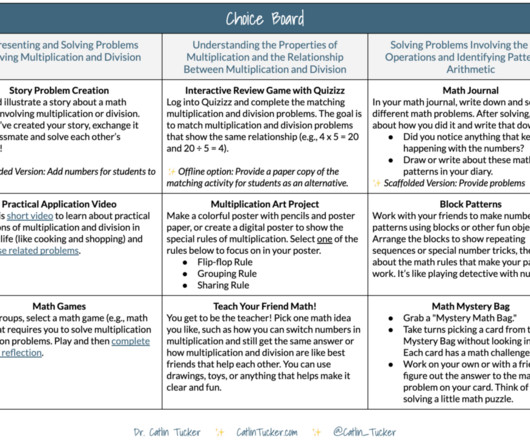Universal Design for Learning: What Educators Need to Know
Waterford
AUGUST 6, 2021
Then, discover a few practical ways that you can use Universal Design for Learning guidelines in your classroom—along with some examples to get you started. In this model, student engagement includes motivating students toward learning in the classroom. Additionally, you can use UDL to boost student motivation.















Let's personalize your content